2023 Internship Cohort
On this page:
Gabriela Benito
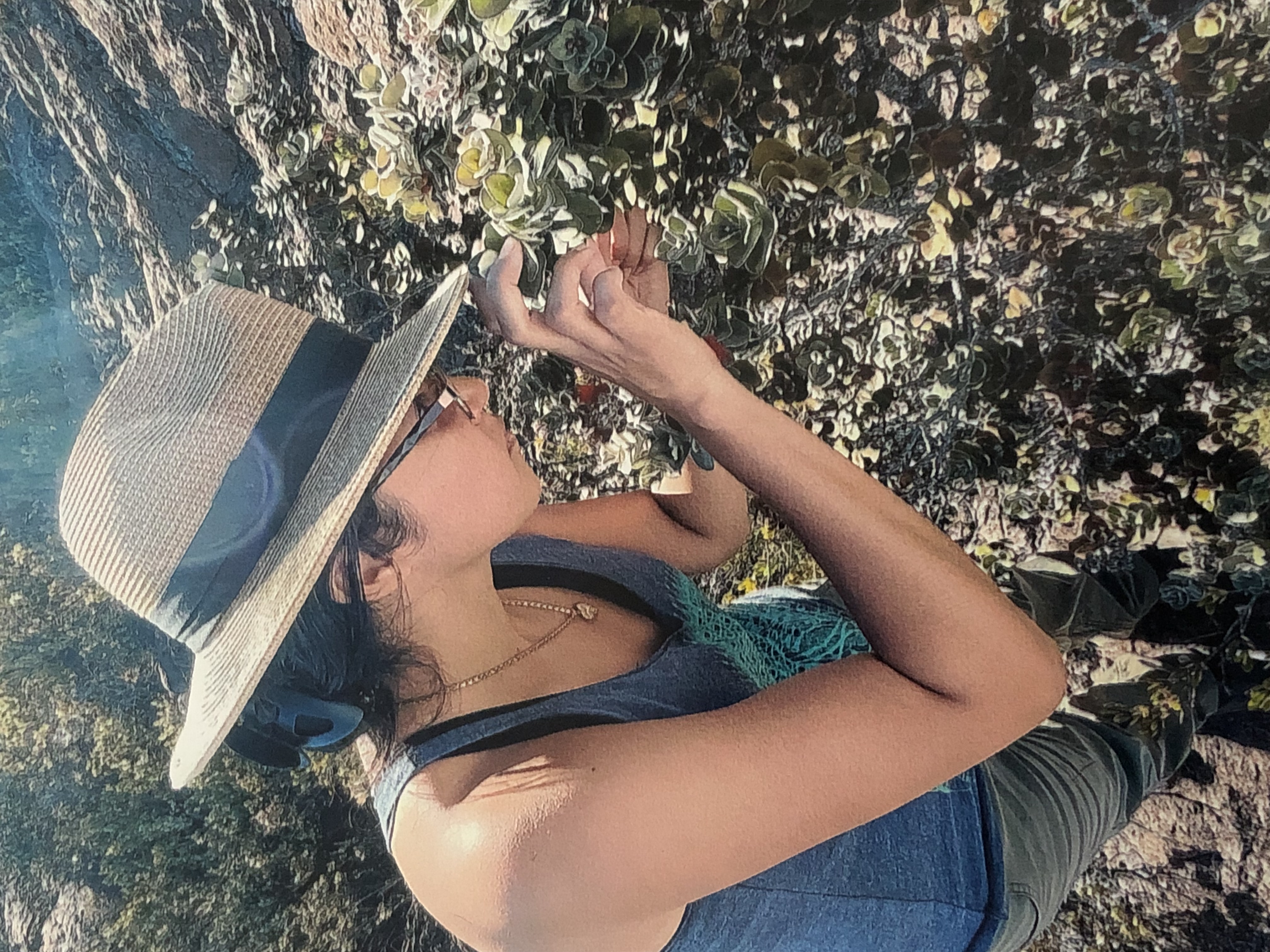 Gabriela is from Las Vegas, Nevada. Her internship is with The University of Hawai'i at Mānoa, College of Tropical Agriculture and Human Resources (CTAHR), Agricultural Diagnostic Service Center (ADSC). With CTAHR, she will conduct extensive data entry using the last 28 years of ADSC plant disease diagnostic data to produce a revised and up to date Hawai'i Plant Disease Checklist and a living database for the ADSC. A fun fact about her internship agency is that CTAHR’s Agricultural Diagnostic Service Center was established in 1984 and provides plant disease diagnosis, insect identification, nematode identification and nematode counts for Hawai'i commercial agriculture, agro-forestry, floriculture, forestry, conservation nurseries and home gardeners. Gabriela says the most challenging part of her internship will be compiling, organization and updating the scientific names of the thousands of plant disease diagnostic records collected over the last 28 years. However, her favorite part about her internship experience so far is observing the variety of plant disease diagnoses found within the state and the number of first detections identified by the ADSC.
Gabriela is from Las Vegas, Nevada. Her internship is with The University of Hawai'i at Mānoa, College of Tropical Agriculture and Human Resources (CTAHR), Agricultural Diagnostic Service Center (ADSC). With CTAHR, she will conduct extensive data entry using the last 28 years of ADSC plant disease diagnostic data to produce a revised and up to date Hawai'i Plant Disease Checklist and a living database for the ADSC. A fun fact about her internship agency is that CTAHR’s Agricultural Diagnostic Service Center was established in 1984 and provides plant disease diagnosis, insect identification, nematode identification and nematode counts for Hawai'i commercial agriculture, agro-forestry, floriculture, forestry, conservation nurseries and home gardeners. Gabriela says the most challenging part of her internship will be compiling, organization and updating the scientific names of the thousands of plant disease diagnostic records collected over the last 28 years. However, her favorite part about her internship experience so far is observing the variety of plant disease diagnoses found within the state and the number of first detections identified by the ADSC.
Nathaniel Breindel
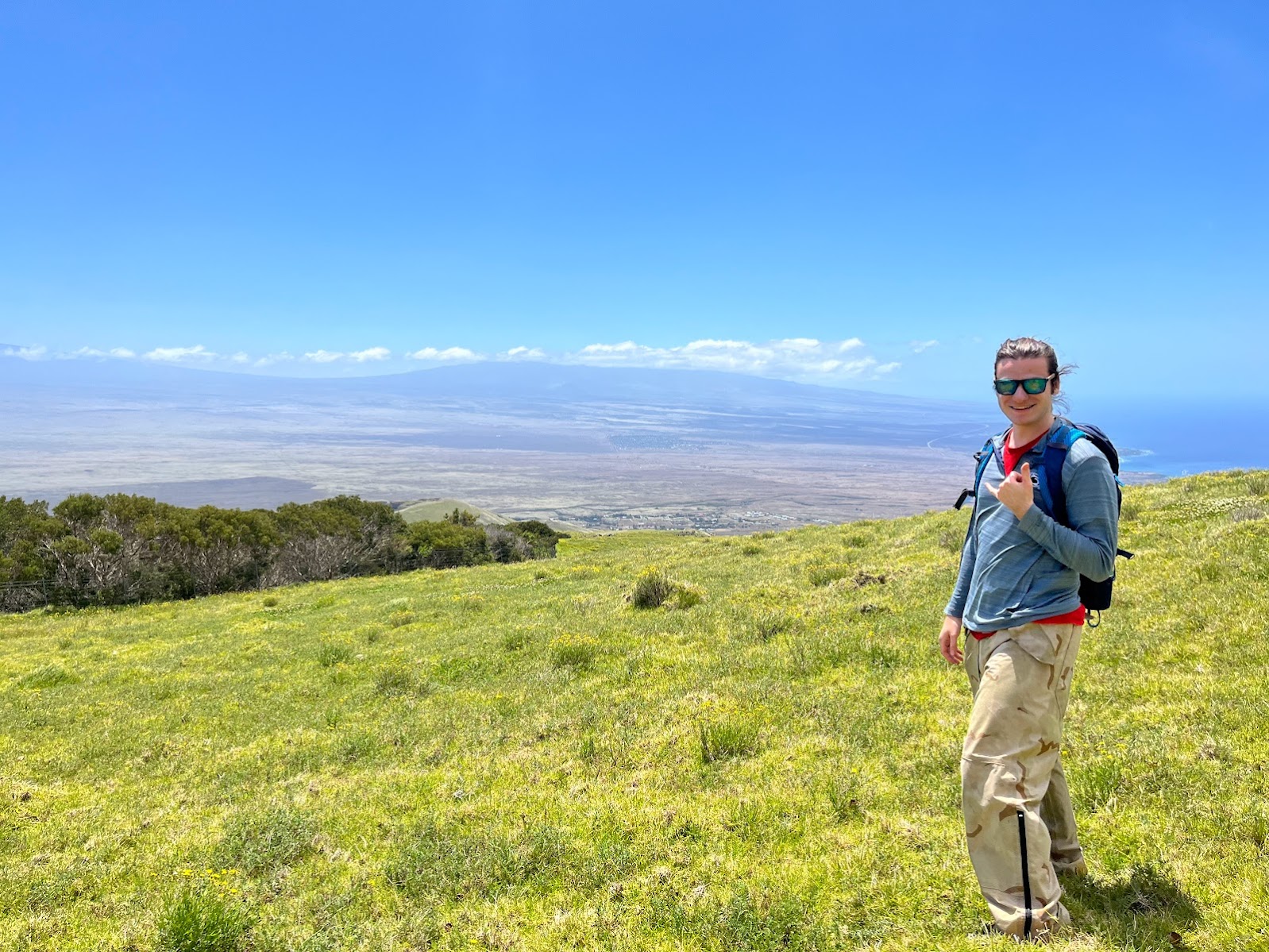 Nathaniel is from Hershey, Pennsylvania. His internship is with the Big Island Invasive Species Committee (BIISC). For his internship, he is the liaison for a project involving the invasive species, Himalayan Raspberry Bush (Rubus ellipticus). He is working with BIISC and members of the Fern Forest community to determine the most effective pesticide for this plant while also protecting the surrounding plants. A fun fact about his internship field work is that using an iPad to input data in the dense forest is quite difficult. The most challenging part about his internship will be analyzing all the data from his project once it's collected because it will take a while. His favorite part about his intership is meeting with community members interested in conserving the biodiversity here in Hawai'i. He loves interacting with his coworkers who are just as passionate as he is about conservation.
Nathaniel is from Hershey, Pennsylvania. His internship is with the Big Island Invasive Species Committee (BIISC). For his internship, he is the liaison for a project involving the invasive species, Himalayan Raspberry Bush (Rubus ellipticus). He is working with BIISC and members of the Fern Forest community to determine the most effective pesticide for this plant while also protecting the surrounding plants. A fun fact about his internship field work is that using an iPad to input data in the dense forest is quite difficult. The most challenging part about his internship will be analyzing all the data from his project once it's collected because it will take a while. His favorite part about his intership is meeting with community members interested in conserving the biodiversity here in Hawai'i. He loves interacting with his coworkers who are just as passionate as he is about conservation.
Mina Jensen
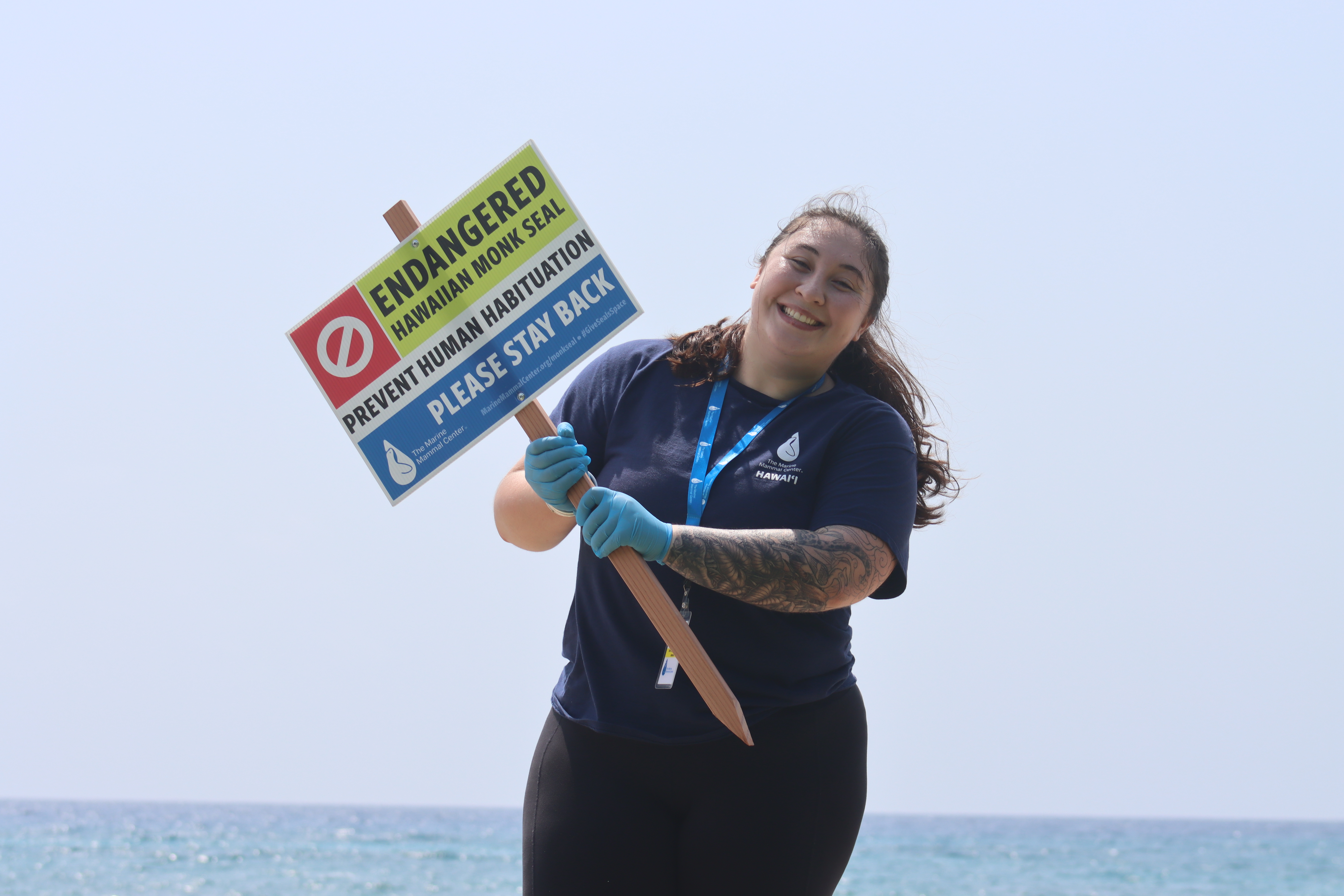
Ariel Patterson
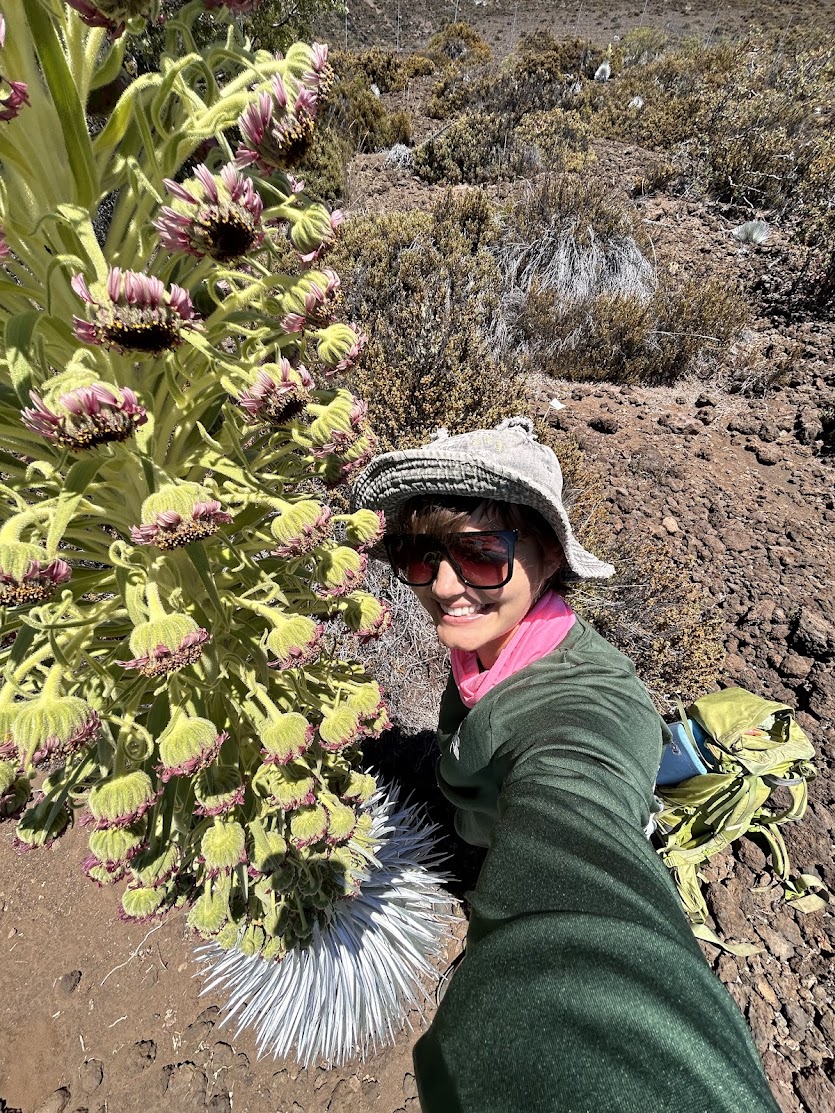 Ariel is from Hilo, Hawai'i. Her internship is with the Plant Extinction Prevention Program (PEPP). With PEPP, she is focusing on Ka'ū and Mauna Kea 'āhinahina, which are two rare plant species endemic to Hawai'i Island that are not only stunning, but have immeasurable cultural and ecological value. She is gathering information about the lineages that are currently growing in order to maximize their genetic diversity when we hand pollinate, collect seeds, and outplant keiki. She is also helping to build a fence around a unit containing wild populations of Ka'ū 'āhinahina in order to protect them from ungulates. A fun fact about her internhip agency is that PEPP has saved 150 rare species from the brink of extinction, where they are now regenerating naturally. The most challenging part of her internship is the physical labor and hiking, but in the best way because it makes her feel healthy and strong at the end of the day. She says she is so grateful to be able to bond with beautiful ecosystems on this island through restoration work. Ariel loves experiencing these places and feeling how they connect to her community through elemental processes like water cycles. She also love working with and learning from her coworkers, who all have such cool plant knowledge!
Ariel is from Hilo, Hawai'i. Her internship is with the Plant Extinction Prevention Program (PEPP). With PEPP, she is focusing on Ka'ū and Mauna Kea 'āhinahina, which are two rare plant species endemic to Hawai'i Island that are not only stunning, but have immeasurable cultural and ecological value. She is gathering information about the lineages that are currently growing in order to maximize their genetic diversity when we hand pollinate, collect seeds, and outplant keiki. She is also helping to build a fence around a unit containing wild populations of Ka'ū 'āhinahina in order to protect them from ungulates. A fun fact about her internhip agency is that PEPP has saved 150 rare species from the brink of extinction, where they are now regenerating naturally. The most challenging part of her internship is the physical labor and hiking, but in the best way because it makes her feel healthy and strong at the end of the day. She says she is so grateful to be able to bond with beautiful ecosystems on this island through restoration work. Ariel loves experiencing these places and feeling how they connect to her community through elemental processes like water cycles. She also love working with and learning from her coworkers, who all have such cool plant knowledge!
Tuimalata Puletiuatoa
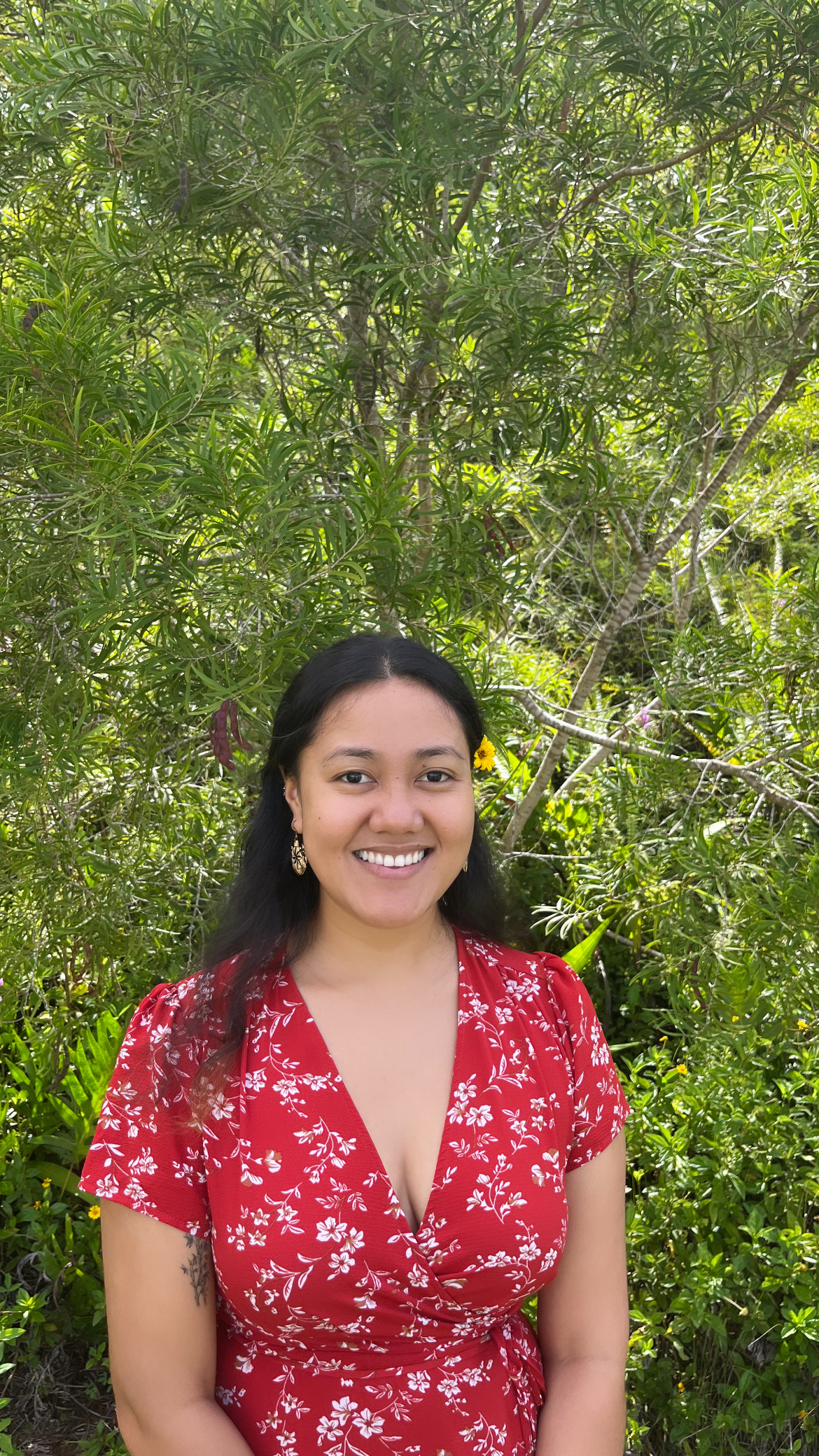
Andrew Tabaque
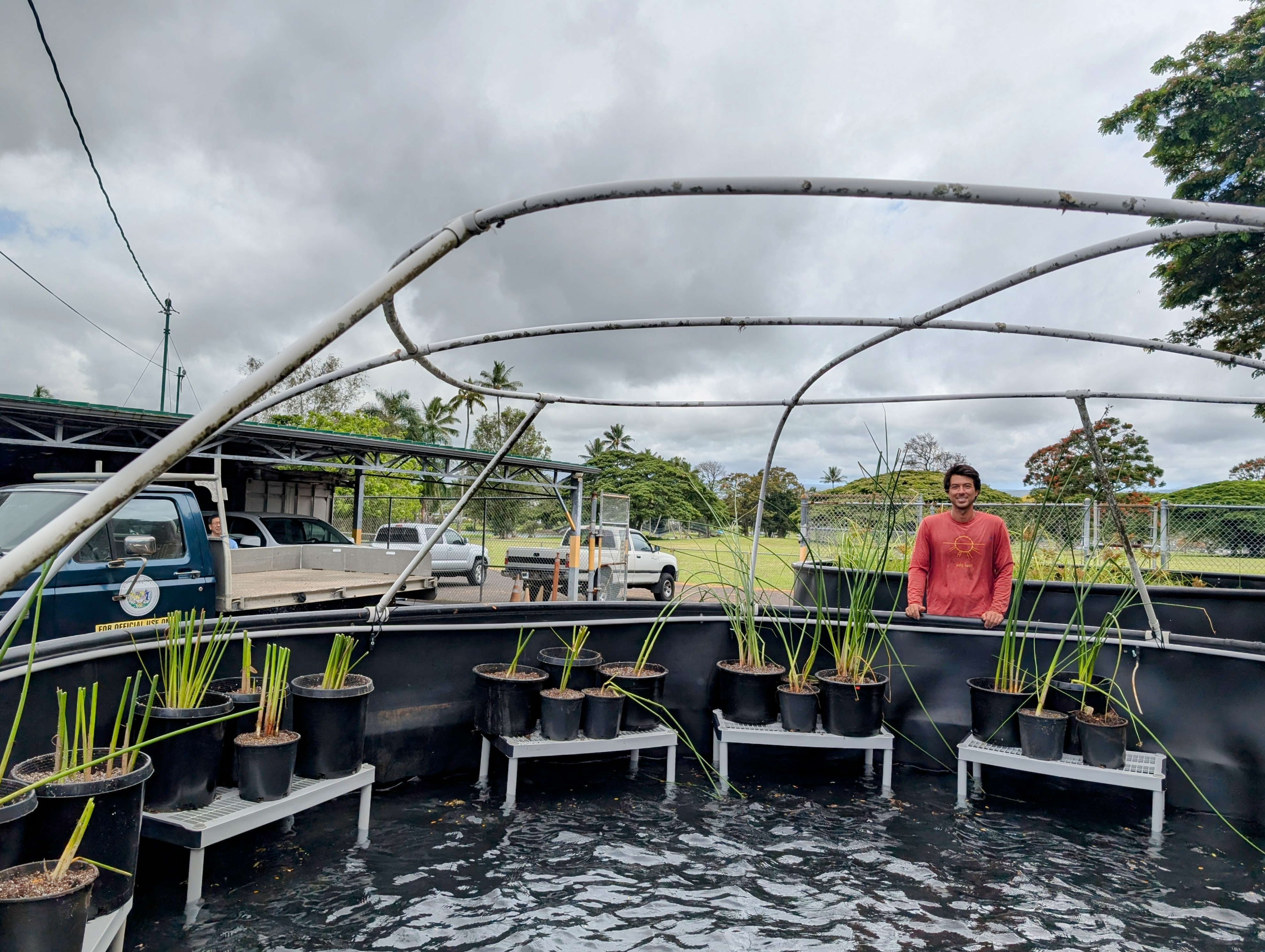 Andrew is from Palm Harbor, Florida. His internship is with the Division of Aquatic Resources (DAR) in Hilo. For his internship, he is studying the growth of aka’akai (Schoenoplectus tabernaemontani) in the Wailoa river to aid in restoration of Waiākea pond. He also assists DAR with their estuary monitoring and education outreach programs. A fun fact about his internship field site is that Waiākea pond is composed of a network of fishponds known as Ho‘akimau, Waiākea, Mohouli, Waihole, among others with names lost over time. These ponds served as one of the royal fishponds of King Kamehameha I and the area has a unique mullet fishery as its the only place in the world where melosira is used as bait to catch ʻamaʻama (Mugil cephalus). The most challenging part of the internship has been balancing classes, work and the internship. His favorite part of the internship experience is learning and working with everyone at DAR.
Andrew is from Palm Harbor, Florida. His internship is with the Division of Aquatic Resources (DAR) in Hilo. For his internship, he is studying the growth of aka’akai (Schoenoplectus tabernaemontani) in the Wailoa river to aid in restoration of Waiākea pond. He also assists DAR with their estuary monitoring and education outreach programs. A fun fact about his internship field site is that Waiākea pond is composed of a network of fishponds known as Ho‘akimau, Waiākea, Mohouli, Waihole, among others with names lost over time. These ponds served as one of the royal fishponds of King Kamehameha I and the area has a unique mullet fishery as its the only place in the world where melosira is used as bait to catch ʻamaʻama (Mugil cephalus). The most challenging part of the internship has been balancing classes, work and the internship. His favorite part of the internship experience is learning and working with everyone at DAR.
Randall Thomas
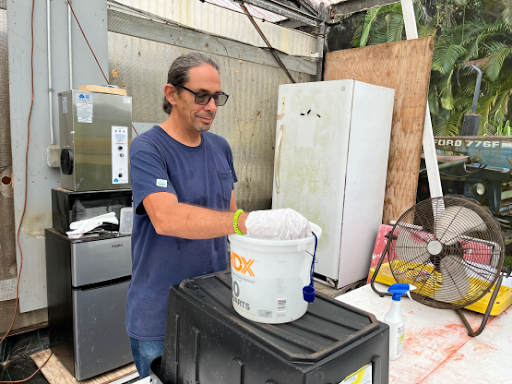 Randall is from California. His internship is with the University of Hawai'i at Hilo, College of Agriculture Forestry & Natural Resource Management (CAFNRM). For his internship, he will be restarting and expanding the composting program for CAFNRM to include a compost learning center. This will allow CAFNRM to utilize this in the many classes involving sustainable farming practices as well as collaborate with the UHHSA waste program. A fun fact about his internsip is that CAFNRM has allowed him to pursue his career as an educational instructor in the diverse field of Tropical Agriculture Sciences. The biggest challenge for him through this intenship experience is performing lab work where small errors can have a big impact and focusing to be error free. His favorite part of his internship has been that excited feeling when a plan comes together without a major glitch.
Randall is from California. His internship is with the University of Hawai'i at Hilo, College of Agriculture Forestry & Natural Resource Management (CAFNRM). For his internship, he will be restarting and expanding the composting program for CAFNRM to include a compost learning center. This will allow CAFNRM to utilize this in the many classes involving sustainable farming practices as well as collaborate with the UHHSA waste program. A fun fact about his internsip is that CAFNRM has allowed him to pursue his career as an educational instructor in the diverse field of Tropical Agriculture Sciences. The biggest challenge for him through this intenship experience is performing lab work where small errors can have a big impact and focusing to be error free. His favorite part of his internship has been that excited feeling when a plan comes together without a major glitch.
River Thomas
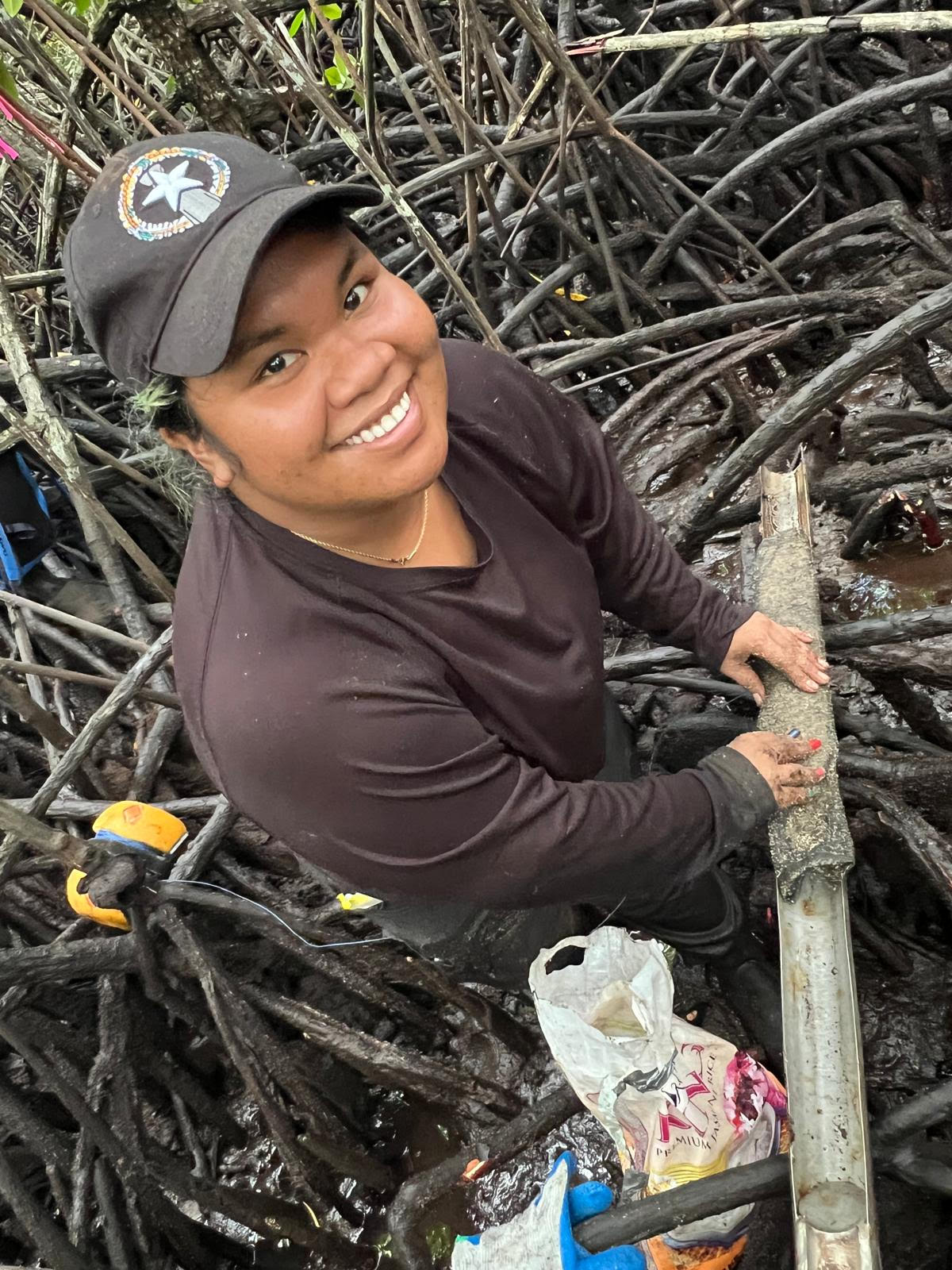 River is from Ngerchemai, Palau. Her internship is with the Division of Forest, Land, and Water Management (DFLW) in Palau and the Institute of Pacific Islands Forestry (IPIF) in Hilo. With her internship organizations, she is investigating dwarf and tall mangroves of the same species (Rhizophora apiculata) growing in Palau and with DFLW she is working to figure out what is causing the stunted growth of these mangrove trees. She will be studying the nutrient capabilities of both dwarf and tall mangroves among other factors in order to better understand these trees and hopefully understand what is causing their differences in growth. A fun fact about her internship is that she worked for the division for three years before she returned to graduate school, so coming back to do research with them is like coming home to family. The most challenging part of her internship is also what is most rewarding about it, navigating mangrove forests in Palau can be difficult and exhausting, and sometimes you end up bruised but what you get to see is amazing. Her favorite part about this internship experience is simply being in the mangrove forests, appreciating how awesome nature is and how resilient the trees are! Trees growing in water is pretty badass. Working with people who care so much about the environment is also something she wouldn't trade for the world.
River is from Ngerchemai, Palau. Her internship is with the Division of Forest, Land, and Water Management (DFLW) in Palau and the Institute of Pacific Islands Forestry (IPIF) in Hilo. With her internship organizations, she is investigating dwarf and tall mangroves of the same species (Rhizophora apiculata) growing in Palau and with DFLW she is working to figure out what is causing the stunted growth of these mangrove trees. She will be studying the nutrient capabilities of both dwarf and tall mangroves among other factors in order to better understand these trees and hopefully understand what is causing their differences in growth. A fun fact about her internship is that she worked for the division for three years before she returned to graduate school, so coming back to do research with them is like coming home to family. The most challenging part of her internship is also what is most rewarding about it, navigating mangrove forests in Palau can be difficult and exhausting, and sometimes you end up bruised but what you get to see is amazing. Her favorite part about this internship experience is simply being in the mangrove forests, appreciating how awesome nature is and how resilient the trees are! Trees growing in water is pretty badass. Working with people who care so much about the environment is also something she wouldn't trade for the world.
Christine Tominiko
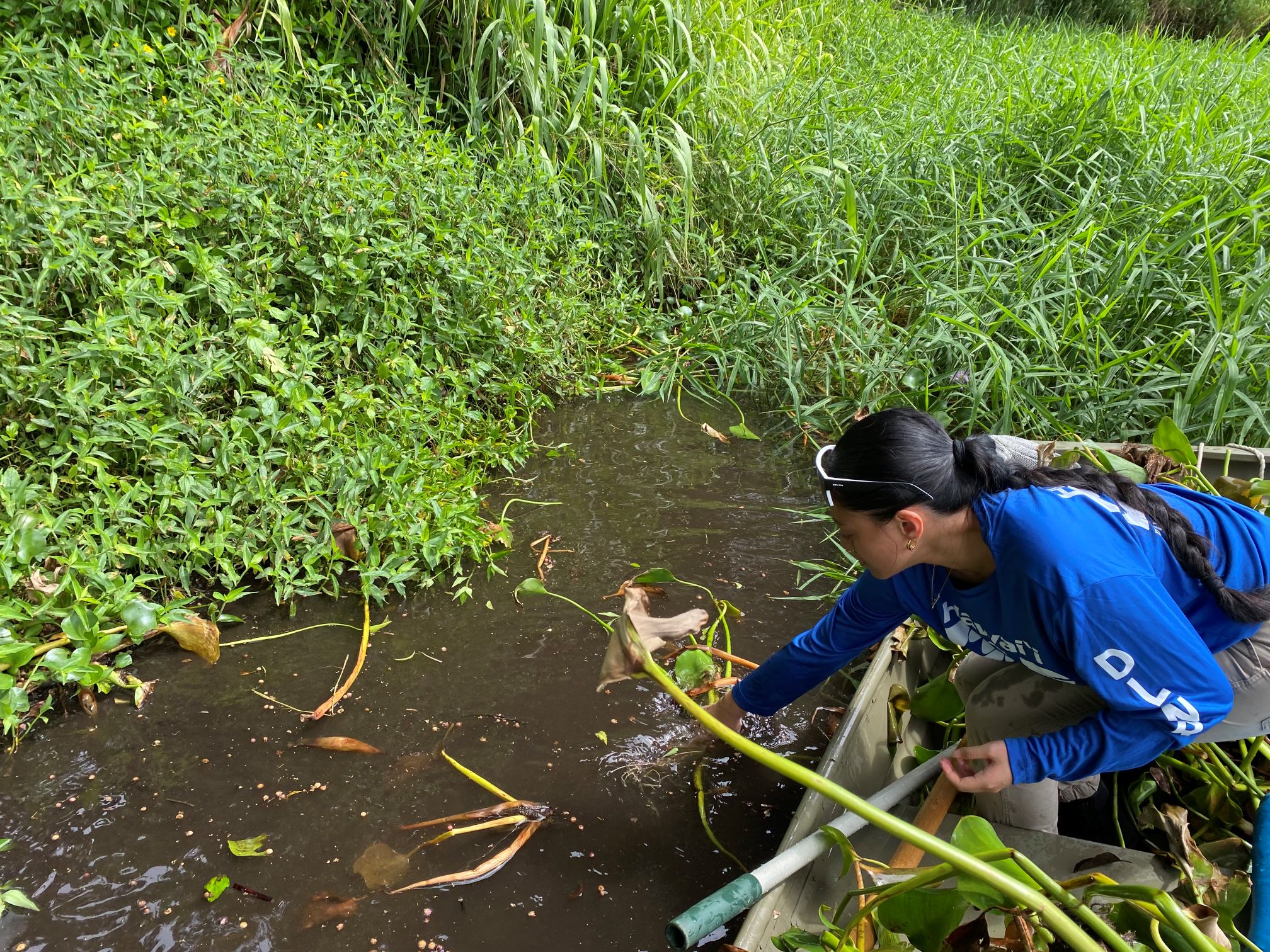 Christine is from American Samoa. Her internship is with the State of Hawai'i Division of Aquatic Resources (DAR). Through her internship, she will be working on creating a monitoring plan for the Waiākea fishpond. This plan will focus on the management of aquatic plants, methods for obtaining a more comprehensive understanding on the fish community and composition within the estuary, and maintenance of the surrounding habitat. She hopes to incorporate various effective scientifically proven methods within this plan and reach out to other colleagues for their expertise to have a strong foundation and positive results. Christine has also had the opportunity to participate in other projects within this organization as well as being part of outreach. A fun fact about her internship agency is that DAR is very interested in the public fishing community they often attend public community meetings that focus on pressing subjects that surround the topic of fishing. The most challenging part about her internship is getting accustomed to the new work dynamic and taking the time to be immersed in her project, which includes a large amount of time to do research and test out methods for research. Her favorite part about her internship is not only working with this organization, but gaining a relationship with the place that she is studying and along the way she is gaining relationships with others.
Christine is from American Samoa. Her internship is with the State of Hawai'i Division of Aquatic Resources (DAR). Through her internship, she will be working on creating a monitoring plan for the Waiākea fishpond. This plan will focus on the management of aquatic plants, methods for obtaining a more comprehensive understanding on the fish community and composition within the estuary, and maintenance of the surrounding habitat. She hopes to incorporate various effective scientifically proven methods within this plan and reach out to other colleagues for their expertise to have a strong foundation and positive results. Christine has also had the opportunity to participate in other projects within this organization as well as being part of outreach. A fun fact about her internship agency is that DAR is very interested in the public fishing community they often attend public community meetings that focus on pressing subjects that surround the topic of fishing. The most challenging part about her internship is getting accustomed to the new work dynamic and taking the time to be immersed in her project, which includes a large amount of time to do research and test out methods for research. Her favorite part about her internship is not only working with this organization, but gaining a relationship with the place that she is studying and along the way she is gaining relationships with others.
